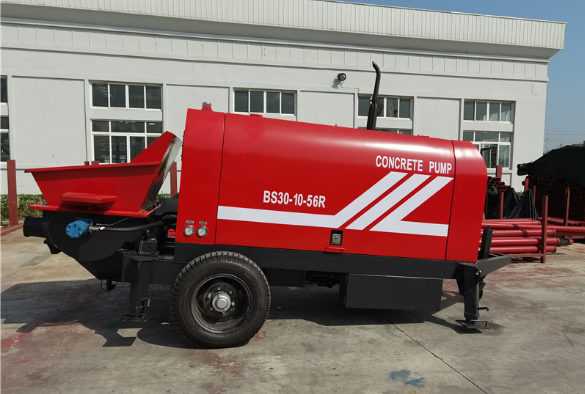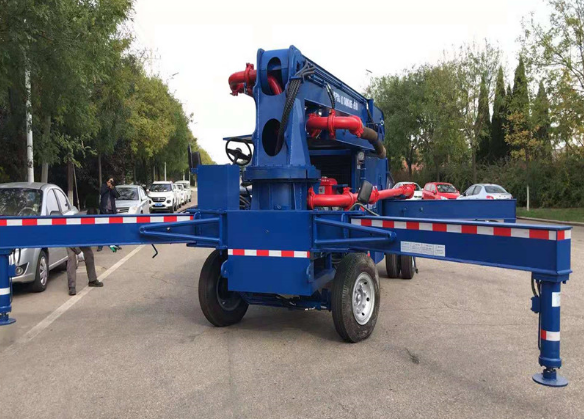When to Use a Boom Pump Vs. A Line Pump
Concrete pumps have become a common sight across construction sites today, whether for large-scale commercial ventures or medium-sized projects. These advanced pumping machines prove equally efficient and cost-effective for both, gradually supplanting other methods of transferring liquid concrete at construction sites in recent years.
Defining a concrete pump:
In the past, cranes were primarily utilized to hoist large buckets filled with concrete to the necessary locations on expansive construction sites. However, cranes could only lift one bucket at a time, typically holding around two cubic yards of concrete. This limitation prompted the necessity for an efficient concrete pumping machine, leading to the creation of concrete pumps.
Simply put, a concrete pump is used in transferring/conveying liquid mixed concrete from the containers to where it needs to be filled at the construction site and thus, it is an important part of any construction project.
What’s the Difference Between Pump Types?
There are two fundamental types of concrete pumps. The first is referred to as a Boom or Truck-mounted Pump, generally employed on larger sites and for extensive road and highway projects. Mounted on a truck or semi-trailer, it features an automatic robotic arm that precisely places the concrete as required. The second type is known as a Trailer, Line, or Stationary Pump, used for smaller tasks like preparing ground slabs or sidewalks. This pump utilizes flexible or steel hoses attached to its outlet, connected together to direct the concrete to its intended location.
Advantages of Boom Pumps
Firstly, understanding the distinction between a concrete boom pump and a line pump is crucial. A boom pump, also known as a "truck-mounted pump," is affixed to a truck and utilizes a remote-controlled arm (the "boom") to deliver concrete precisely where needed.
The primary advantage of a boom pump lies in its ability to swiftly pump large volumes of concrete, even from considerable heights, with remarkable accuracy. Additionally, the adaptable boom configurations enable access to challenging areas on a bustling construction site, facilitating concrete pouring in otherwise inaccessible spots.
Applications of Boom Pumps
Because of its speed and high-volume capacity, a concrete boom pump will usually be the best choice if you have a large-scale project that requires a lot of concrete, such as the construction of an apartment building or another large facility. Similarly, if the construction site has a lot of obstacles you need to work around (like bridges or other structures), a concrete boom pump would be your best option.
Advantages of Line Pumps
A concrete line pump consists of a lengthy hose connected to a stationary pump mounted on a trailer. This hose offers enhanced control over the concrete pour, particularly for horizontal pumping, allowing for extensive hose extension. Furthermore, line pumps are notably smaller and more maneuverable than their boom pump counterparts, ensuring easier transport and navigation within job sites.
Applications of Line Pumps
Due to their flexibility and lower-volume capacity, concrete line pumps are frequently employed for smaller residential tasks, such as constructing swimming pools or repaving driveways. Moreover, in confined or obstacle-laden areas where a boom pump might not fit, a line pump serves as the more suitable alternative.
Concrete Boom Pump vs. Line Pump: Overview
In summary, if you're undertaking a larger or commercial project requiring rapid concrete pumping in substantial volumes, a boom pump is the ideal choice. Capable of dispensing over 150 cubic yards of concrete per hour, boom pumps efficiently handle substantial commercial tasks, reaching greater heights, albeit at a slightly higher cost compared to line pumps.
Conversely, for smaller commercial or residential projects, a line pump generally proves more suitable. With increased flexibility in concrete delivery locations and cost savings relative to a boom pump, line pumps are preferable. Although the concrete discharge rate is not as fast as with a boom pump, it usually suffices for the needs of smaller-scale projects.
For additional insights on boom pumps, line pumps, or concrete pumping in general, feel free to reach out to us at SHENGMAO.
 предыдущий: The Top 5 Advantages of a Concrete Pump
предыдущий: The Top 5 Advantages of a Concrete Pump














